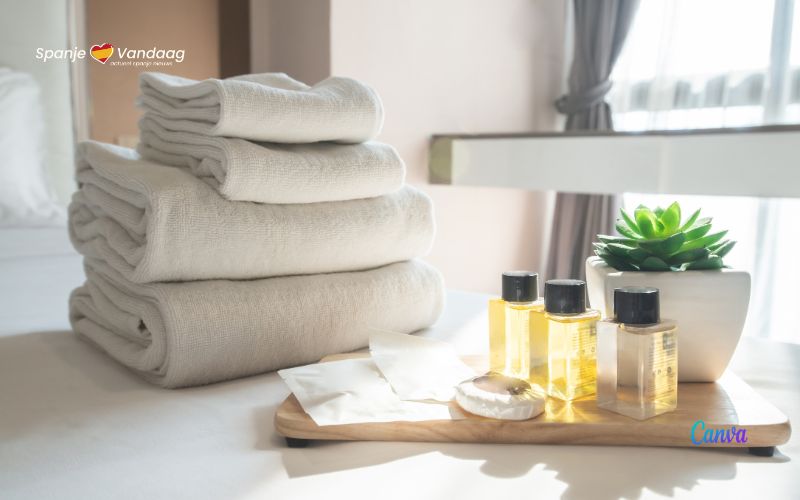The mental and physical health of employees is now on the agenda in almost all offices. There are a lot of vitality programs out there, although the road to the top is sometimes bumpy. “To shift the tide, new role models are needed.”
A maximum working week of four days. There is no turnover, working hours and a flat organizational structure. At Juli Notaris in Utrecht – named after the month in which “many people discover what matters in life besides work” – these are standard business operations. Partner and notary Annick Schenkenberg van Mierop: “As far as we are concerned, it’s all about balance. We are convinced that the quality of our services benefits if people feel satisfied and achieve a balance between work and private life. The work of notaries and lawyers inevitably creates a lot of stress. As an employer, we look To the stressors we influence.By reducing this as much as possible, we hope to create a corporate culture in which employees are truly happy with their work.
This belief that a happy cow gives more milk has also permeated the rest of the legal landscape. A field tour of the various offices yields a list of notable programs and initiatives in the field of physical and mental health. The stated motivations behind these programs are agreed upon: Employees who feel good about themselves are more productive, feel more committed to the organization, and drop out less often. The companies also emphasize the “extremely challenging and performance-oriented work environment” in which lawyers, notaries and tax professionals find themselves. That’s why many organizations in this field feel an additional responsibility to keep their employees around. The process of making employees fit began by offering fresh fruit bowls every week in each department and offering a gym membership or cycling plan.
The concept of vitality is now being treated more comprehensively by offices: after all, feeling good means more than just being physically healthy. The goal is a safe, diverse and inclusive work environment where employees feel a space in which they can be themselves. To achieve this, offices operate different buttons. There are internal vitality weeks, workshops to recognize signs of stress, diversity and inclusion programs, personal leadership programs, employee satisfaction surveys, and information portals on topics such as work-life balance, health, parenting, and mindfulness.
Preventive approach
With five generations in the workplace – from baby boomers to Generation Z – offices try to respond as much as possible to the diverse needs of employees with their vitality policy. For example, Baker McKenzie organizes a Young Parents Lunch for young parents, where employees can share experiences and point out what they need to combine work and family. NautaDutilh organizes menopause sessions, provides a flu shot, provides access to an online psychologist and facilitates individual nature retreats. Many offices offer additional and often paid parental leave, or the option to work flexibly, in order to care for children or parents who need help.
Many offices stress the importance of a preventive approach to this topic. That is why more and more space is being made for physical and mental health in internship programs. For example, Loyens & Loeff last year introduced a revised version of its Law Academy, with “particular attention to personal development.” In addition to objective training, the program includes components such as individual coaching, energy management, a buddy system, and “deep diving” to gain insight into personal traits and pitfalls. By extending the internship program from two months to six months, the firm believes trainee lawyers will leave the practice groups with greater self-confidence and greater self-reflection.
Cultural change
At the same time as we mentor the younger generation, we work on the personal development of senior employees and partners. After all, as managers they play an important role in the company’s intended safe culture. Therefore, many offices invest in developing leadership skills for older adults. Sjoerd Meijer, NautaDutilh Managing Partner: “A healthy work environment requires empathetic leaders. People who support professional and personal growth. They not only give feedback, they are also open to receiving it.
In practice this is not easy. In addition to being excited about their own offerings, many offices also have a different sound. It often seems that the needs of different generations in the workplace can vary greatly. People entering the workforce now have different desires and expectations regarding, for example, work-life balance compared to older employees. People often think differently about issues such as diversity and inclusion or showing vulnerability. This sometimes makes it difficult to initiate structural cultural change. Former lawyer Ingrid Wallricht agrees. As a trainer, trainer, and intervention discussion leader, she guides lawyers, partners, and boards in promoting sustainable collaboration.
Like mushrooms
Walrekht: “In recent years, vitality programs and mandatory interaction courses have appeared like mushrooms in the legal profession. In itself it is very good, because there is a lot to be gained in this profession in the field of physical and mental health. It’s great to see increased awareness and the number of offices investing literally and figuratively in employee well-being these days. At the same time, I see offices still struggling to answer the question: How can we make all these great goals part of our daily practice?
The fact that different generations work together in the legal profession does not make it easier, but according to Wallricht, it also provides opportunities. “Generations can also be a valuable mirror for each other. While young people can sometimes be slaves to their emotions and drop out once things don’t go well, they can learn a lot from the work ethic and perseverance of their elders. At the same time ,The older generation often acts based on reason. They have traditionally been used to completely separate work and private life and to avoid conflicts. In this they can follow the example of young people who can understand their feelings better. We must all learn to use our full “humanity” in Our work and dealing with the discomfort associated with that.
Thorough self-knowledge
All system improvement begins with comprehensive self-knowledge, says Wallricht. “It is important to look with an open mind at your part of the whole. In my sessions with seniors and partners, we discuss it again: Why do you think what you think, and why do you do what you do? How you grew up, what prejudices you have, consciously or unconsciously.” I advise them to constantly engage in conversations with their teams, no matter how uncomfortable they may be. What’s going well, what needs improvement? Many lawyers find this exciting, because they don’t like to be confronted with their own powerlessness. A lot of my work revolves around Increase those skills.Only when you are truly open to others will connection and safety arise.
According to Wallricht, you can’t create a safe and healthy work environment – just by offering workshops and walk-ins. “To turn the tide, new role models are needed. Courageous seniors and partners who are willing to break old patterns and observe the totality of humanity in the workplace. In this regard, we still have a long way to go in the area of well-being in the legal profession. But when I started Having been practicing for ten years, I have often felt like I am trying to plow hard ground. We have already planted many seeds. Hopefully, the real harvest will begin soon.
This article was published in New Advocatie magazine. Click on the cover to open the magazine or go to the magazine page. You can also request a free subscription here.

“Total coffee specialist. Hardcore reader. Incurable music scholar. Web guru. Freelance troublemaker. Problem solver. Travel trailblazer.”







More Stories
Dirk Drawlans’ Wild Animals: How Barnacles Invade Our Seas
Explore the space with the new virtual reality program “Final Frontier” at Arthouse LUX
A new way to detect the first stars in the universe